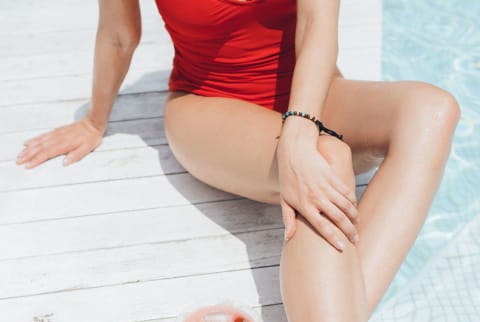Advertisement
Frequent Yeast Infections? Here's Exactly How To Prevent Them Naturally


It's the kickoff to swim season, and along with those wet bathing suits and sunshine comes a less pleasant summer side effect: yeast infections. Vaginal yeast infections are quite common, and vaginitis (inflammation of the vaginal tissue) is the No. 1 reason women visit their OB-GYN, especially in the summer months.
So how do you know if you have a yeast infection? Vaginal yeast infections often result in a thick white vaginal discharge, itching in the external vaginal area, redness, and irritation. Typically, yeast infections do not have a strong odor, and oftentimes, symptoms can be worse after sexual intercourse. Many women get a yeast infection after taking antibiotics. If you have a yeast infection, you may need a topical antifungal, which can be purchased over the counter at the drugstore, or an oral antifungal, which requires a doctor’s prescription. These medications can be very effective, but remember that there are other infections and irritations that can cause inflammation of the vaginal tissue. So if you are not sure whether you have a yeast infection, or if your symptoms are not improving with treatment, make sure to get an exam by your doctor.
Repeated treatment for yeast infections can be frustrating, and a lot of my patients wonder if there is something more they can do. The good news is that there are many different things that you can do to prevent yeast infections from making another unwanted appearance. The following tips will help you prevent those pesky yeast infections from coming back:
1. Limit sugar and processed carbs.
We all live with some yeast in our body, but a problem occurs when this yeast is able to overgrow. When there is too much yeast in our body, symptoms start to occur. Yeast loves to grow when we consume too many simple sugars and refined carbohydrates. If you are regularly consuming soda, sweetened coffee drinks, candy, cookies, and cake, the yeast level in your body (and vaginal area) will increase, causing the uncomfortable itch. Start with taking out all added sugar in your diet and observe your symptoms. Some women notice that they even have to limit juice, breads, and pasta. Alcohol is also a sugar, so it's also important to keep your alcohol intake to a minimum if you are plagued with yeast infections.
2. Avoid antibiotics.
We are covered with trillions of healthy bacteria and yeast that make up our microbiome. These important bugs cover the skin, the digestive system, and, yes, the vaginal area. When we take antibiotics to get rid of an infection, many of the good bugs in our body are destroyed as well. Because of this, unhealthy bacteria and yeast can overgrow and start to cause undesirable symptoms. This is one reason it's so important to take antibiotics only when absolutely necessary. Don’t just reach for an antibiotic hoping that it will get rid of your cold. It won’t! If your doctor recommends an antibiotic, confirm that the antibiotic is necessary before you start to take it. And finally, always try to eat organic, antibiotic-free animal protein.
3. Take a probiotic.
Probiotics are the good bacteria and yeasts that can be found in fermented foods like kimchi and plain unsweetened yogurt. Probiotics can also be taken as pills. I always recommend a probiotic from a reputable supplement company. There are also many oral probiotics now specially formulated for the vaginal area. Look for probiotics with Lactobacillus reuteri and rhamnosus. Start slow and work up as tolerated. Many people will need multiple capsules per day when they are struggling with recurring yeast infections.
4. Try a vaginal probiotic.
Applying good bacteria directly to the vaginal area is often helpful for many women. I will often have vaginal probiotics compounded for my patients. Another option is to insert plain unsweetened yogurt into your vaginal area. A few tablespoons applied to your inner and outer vaginal tissue is soothing and can replace many of the good bacteria. You can also open up and add a probiotic to the yogurt or into coconut oil to provide even more good bacteria. If using coconut oil, mix a probiotic in one teaspoon of coconut oil and then refrigerate to harden, which will make it easier to insert. Be sure to use these when you lie down at night to go to sleep, as this will help the probiotics stay where you want them. There are also some vaginal probiotic gels on the market that are already mixed and ready for use. Continue this routine at least a few times a week for a good month after the yeast infection is at bay to prevent a recurrence.
5. Don't forget the basics!
Choose cotton underwear, change out of wet clothes as soon as possible, and keep your clothes loose so that air can circulate and moisture does not build up in the vaginal area. Finally, stay away from douching! Douching can change the pH of the vaginal area and wipe out many of the good bacteria, allowing yeast to overgrow.
Remember, there are other infections that can cause vaginal discharge. So if your symptoms are not resolving or if your discharge has a strong smell, make sure to visit your doctor. You may need an antifungal medication or another medication to resolve your symptoms.
Now that we know how to tackle yeast infections, here's your guide to natural UTI treatments.